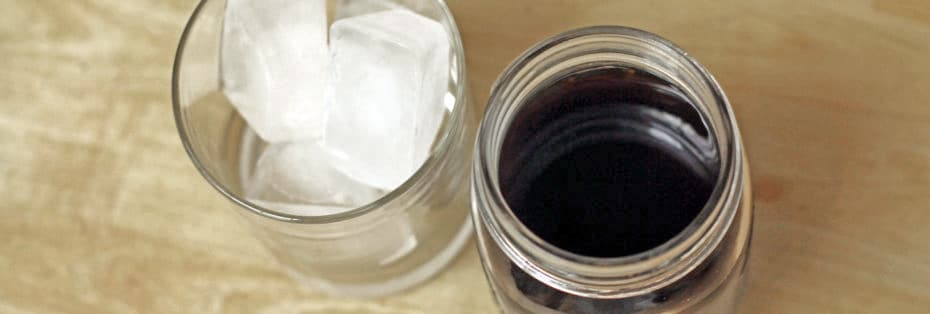
How to Make Cold Brew
The end of summer may almost be upon us, but the heat is showing no signs of slowing down. The perfect solution to these dog days of summer? Cold brew. It’s the ideal afternoon pick-me-up or ready-to-go option for busy mornings, and making it can be an easy and fun activity to do at home.
Cold brew may actually be one of the simplest ways of producing coffee at home. All you need is a container to combine ground coffee and cool water in, a filter to separate them, and a second container for storage.
As with any coffee brewing method, the ratio of coffee to water is critical to the taste you end up with. With cold brew, you have a lot of options. First of all you can either choose to make concentrate that you’ll need to dilute before drinking, or you can make a ready to drink batch right away. The former calls for about 1 part coffee to 2 parts water, while the latter calls for between a 1:8 and 1:4 ratio of coffee to water (we prefer 1:4).
With cold brew’s longer steeping time, you’ll want to either select a coarsely ground coffee or grind your beans that way yourself. Once you’ve weighed out your beans and water to the desired ratio, it’s time to find a container to combine them in. A nice and easy way is to use a French Press with the filter temporarily removed as it gives you a built-in way of filtering out the grounds later. Large mason jars and other carafes work well, too.
Once combined, stir around the grounds until they are fully saturated and let the mixture sit for 12 to 24 hours. For longer steeping times it’s recommended to place the container in the fridge to slow down the extraction of the grounds. It’s this slow extraction, at a cool temperature, that produces a drink that’s naturally sweet, with a full body and a less acidic taste than its hot-brewed counterpart.
At the end of this process, it’s time to separate the grounds from the drink. If you have it in a French Press you can simply plunge the filter to the bottom and pour out the drink into another container for storage if you don’t plan on finishing it immediately. Otherwise you’ll need to find another method of filtration and a way to store your batch so you can keep on enjoying it for the next few days (if it’s diluted) or up to two weeks, if you made concentrate.
If you’ve used a regular container for steeping then your next step is going to be filtering out the grounds. One of the best ways to do this is to place a cheesecloth in a mesh sieve, place that over a large measuring cup or other container and gently pour in the mixture. If you don’t have cheesecloth handy, paper towels can do in a pinch as will a regular coffee filter–but these aren’t ideal and may sometimes rip. Take care not to press the grounds or squeeze the cloth as this will only extract more bitterness. Once the coffee has strained you might find that you need to repeat the process, otherwise transfer to a container for storage.
Cold brew’s natural sweetness means it can be enjoyed without sugar or anything added, but there can also be fun ways of making it your own. Beyond the obvious of milk or cream, some enjoy adding a little flavor with cinnamon, cardamom, or other aromatics and spices either during or after the brewing process – just remember that a little goes a long way.
With cold brew’s rise in popularity in the last few years there are, of course, and endless array of products on the market claiming to simplify the process. For the most part these products are large carafes with a mesh infusion cylinder in the middle for grounds to sit in while steeping. These products can ease the clean up and filtration process but they’re not all made equal. Due to the build of the infusion sleeves, some don’t allow for each coffee ground to be properly immersed, resulting in a batch of cold brew that may be weaker than one where the grounds and water are more fully incorporated. You may find some of these worthwhile but it’s worth going through the process a few times in a more DIY fashion first so you can see what you like and just how easy it can be.
As always, you should play around with the ratios, brew time and types of beans you use in order to try to get a final drink that suits your taste. With the simplicity and cost-effectiveness of making cold brew at home means that experimenting is half the fun and a breeze to do – happy brewing!
